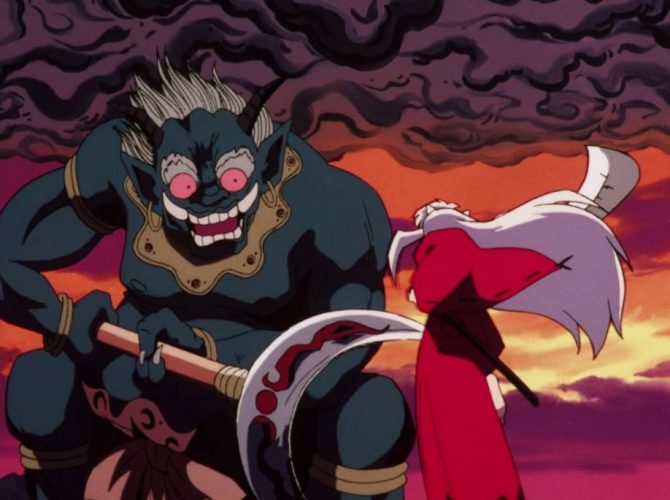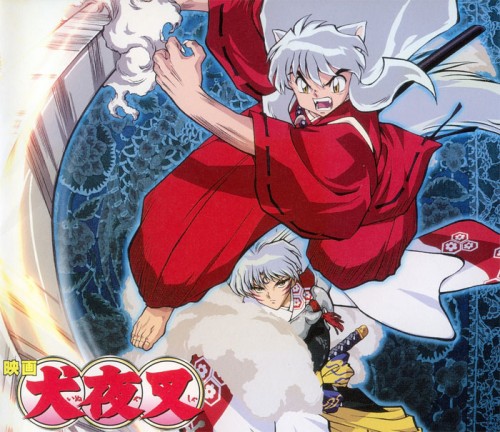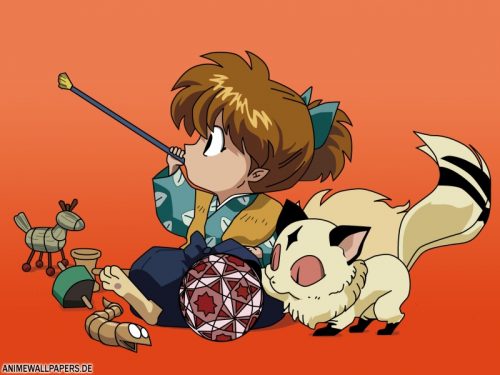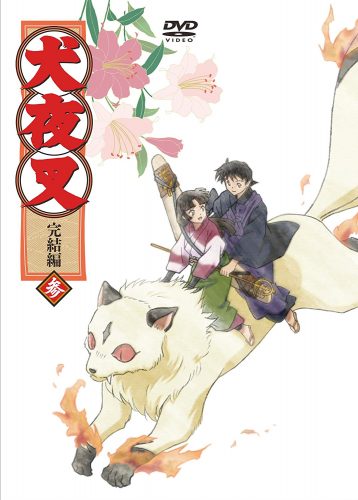All About Feudal Demons: Exploring Yokai in the World of InuYasha and YashaHime


It’s no secret that Takahashi Rumiko drew a lot of inspiration from traditional Japanese folklore while creating the fantasy feudal Japan setting of InuYasha and its sequel YashaHime, most notably with the many demon characters. These supernatural creatures, generally called yokai in Japanese, are incredibly numerous and varied, but how much of the actual mythology transferred over into the Yasha-verse? Today we’ll be examining some of the yokai featured in InuYasha and YashaHime and how they compare to their folkloric inspirations.
From Inugami to Inuyasha

Our titular hero, along with his brother Sesshomaru and other characters, are known simply as dog demons or inu yokai. Since he’s a half-demon, Inuyasha himself is truly humanoid but his full-blooded brother and father’s true forms are actually that of giant dogs with long, flowing white fur. As for their yokai counterpart, the most notable dog yokai is the inugami which, at least initially, don’t seem to have that much in common with Takahashi’s creation. Inugami are strange yokai that act as familiars to sorcerers who create them through a rather grotesque ritual involving burying a dog up to its neck to drive it beserk from hunger then decapitating it at its greatest point of desperation, burying the head under a busy street so it cannot rest which creates a maleficent spirit, and then excavating the head and preserving it in a jar it to evoke its powers which include possession, wish-granting, and curses. Like Japanese dogs, inugami are said to be very loyal and protective to certain people but ambivalent or hostile towards others, even turning on weak-minded evokers who try to summon them, similar to Inuyasha and Sesshomaru’s complicated generally hostile relationship with humans while protecting Kagome and Rin respectively. However, it’s actually likely that Takahashi took more inspiration from Chinese dog spirits called tiangou “heavenly dogs” that resemble the dog demon’s true forms. These mythical creatures became the tengu in Japan which are depicted with more bird-like features, perhaps to better fit with their ability to fly through the air. Tengu are known to be masters of swordsmanship and magic and appear frequently in Japanese folklore, perhaps most famously with the white-haired tengu king Sōjōbō who taught the semi-legendary samurai Minamoto no Yoshitsune. In any case, the dog demons of InuYasha and YashaHime seem to draw from inugami, tiangou, and tengu.
Kitsune and Tanuki Tricksters

Some more direct inspirations can be found in characters like Shippo and Hachiemon who draw from kitsune (fox) and tanuki (racoon dog) yokai respectively. Both of these yokai are known as tricksters who use magic to transform themselves and other objects using various tools, particularly leaves for tanuki as made famous by Animal Crossing. This is reflected very much in both characters who frequently transform or use various illusions like Shippo’s foxfire which is likely inspired by kitsunebi which is supernatural blue or green fires often said to be lighting for kitsune weddings. Shippo’s frequent difficulty in getting rid of his tail in transformations is also widely part of kitsune myths and Hachiemon’s greater skill in that, along with his name which contains hachi (meaning eight), is likely referencing the famous phrase “the fox has seven disguises, the tanuki has eight”.
Flaming Flying Mounts

Some other demons of note in InuYasha are Kirara and Entei who are quite similar to each other in being partially flaming demon animals who can somehow fly through the air. Kirara is based on nekomata yokai, as evidenced by her two tails, but is a friendly and loyal companion instead of the malevolent nekomata of folklore. Nekomata are said to come from ordinary cats who live to be very old, becoming yokai after their tails split into two. Nekomata have the ability to create fire and transform into a larger form, like Kirara, along with necromantic powers to raise and control the dead. They often set fires and devour their owners and townspeople before making their way to the mountains. Entei on the other hand, doesn’t appear to have a clear yokai link unless you want to count the Shishi/Komainu (lion dog)-like pokémon of the same name, but may be inspired by the fire-breathing horses of the Greek war god Ares: Phlogios, Phobos, Aithôn and Konabos.
Yokai Emphemera & Hanyo
Like many of the characters we’ve discussed so far, many of the demons featured in InuYasha and YashaHime are inspired by folklore but don’t necessarily follow their traditional depictions exactly or are completely original creations just done in the yokai style. Considering how numerous and varied “real” yokai are, this doesn’t really cause any issues for the series and interesting combinations just add more variety like Naruku’s mind-reading incarnation Goshinki whose powers are likely drawn from Satori while having a very oni-like appearance. It’s also worth mentioning that, traditionally, there are no half-demons in the InuYasha style with the possible exceptions of the super-strong “golden boy” folk hero Kintaro and famous mystic Abe no Seimei who are sometimes said to have a dragon father and kitsune mother respectively. There are also many yokai stories involving “magical wives” like yuki-onna where a human man has children with a female yokai but in these cases, it seems that when the yokai transforms into a human, their children are normal humans.
Final Thoughts
Altogether, InuYasha and YashaHime’s feudal fairy tales strike a balance between tradition and originality when it comes to creating a rich variety of yokai characters that expands upon folklore, particularly with its half-demon characters. While many of them are arguably less spooky, or at least less graphically violent, than some of their inspirations, these yokai are nevertheless a fun and memorable part of their series. What are some of your favorite yokai featured in the world on InuYasha? Let us know in the comments section below and be sure to stick around Honey’s for more of all things awesome, anime and otherwise! Until next time, watch out for two-tailed cats! See ya~
[recommendedPost post_id='305725' url='' title='' img='' class='' widget_title=''] [recommendedPost post_id='305151' url='' title='' img='' class='' widget_title=''] [recommendedPost post_id='293222' url='' title='' img='' class='' widget_title=''] [recommendedPost post_id='292839' url='' title='' img='' class='' widget_title='']

No comments